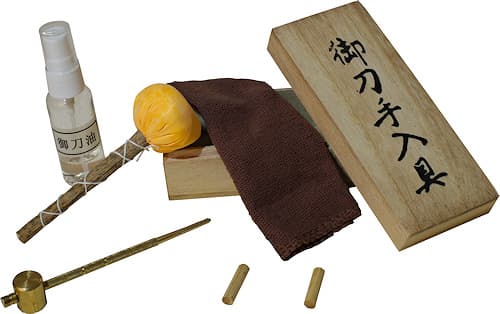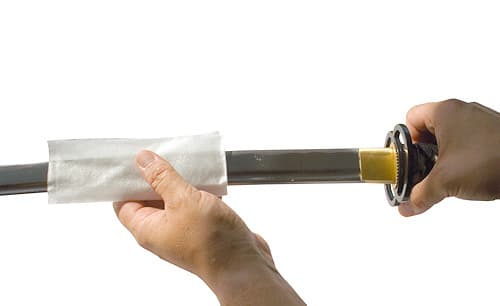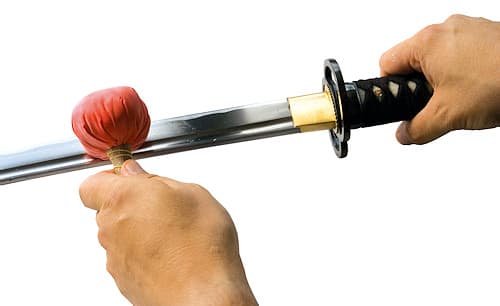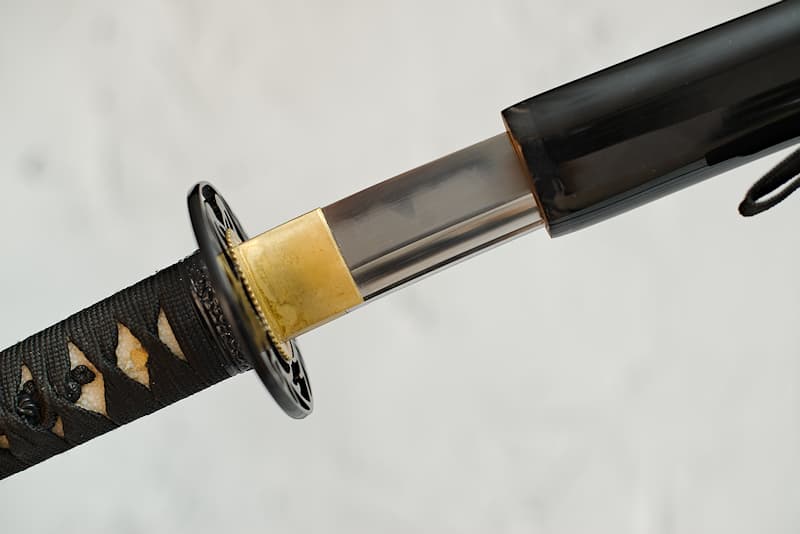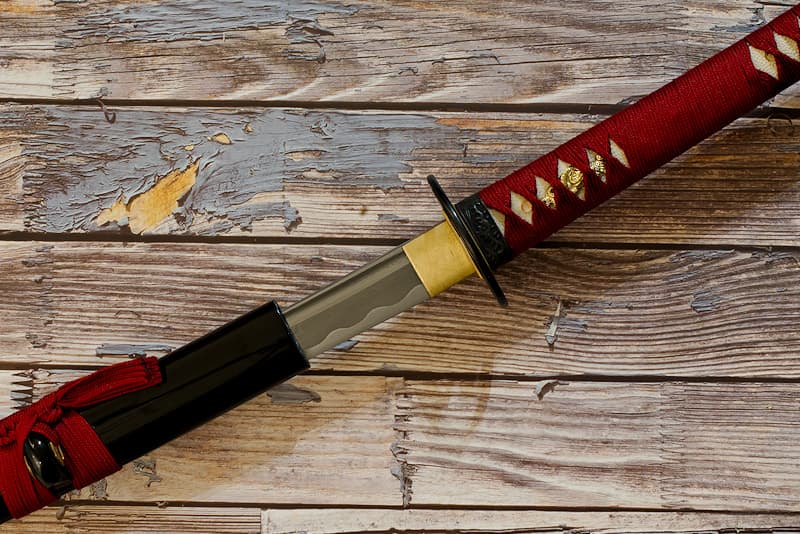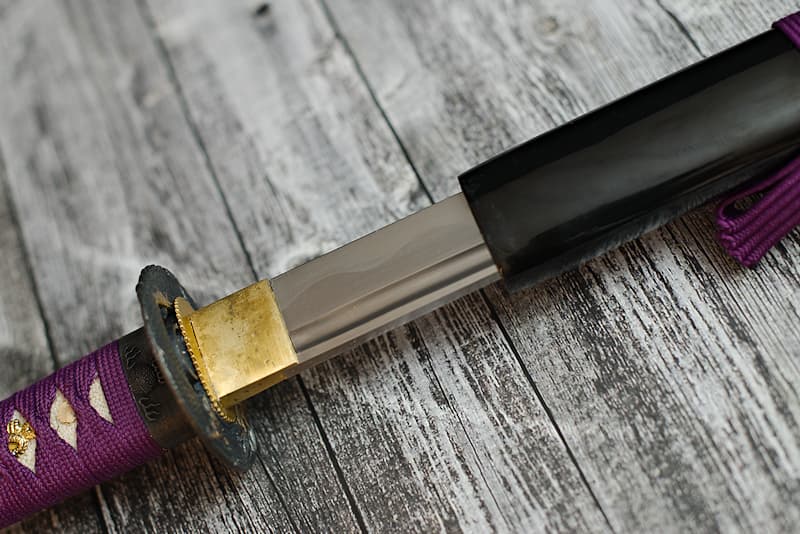Katana "Yain" (夜陰 in the shadow of night), Sushu Kitae, selective tempering, ito and dark blue sageo
Sharp katana, Soshu Kitae forge (steels 1045 / 1060 / 1095), genuine temper line (hamon 刃文), hand-sharpened, with black scabbard (saya 鞘), koiguchi (鯉口), Kurigata (栗形) and Kojiri (鐺) in natural horn, delivered in a composite wood case containing a maintenance kit, lacquered stand and protective fabric cover
Reference n° 0575 - Shipment within 48 working hours
860 € (free shipping)
Payment in 3 free instalments via Scalapay
or € today
Example for € :
3 monthly payments of € (0% APR)
I blend into the night, the better to surprise and slash. My blade, whose misty wave denotes the secret of my manufacture, is made of three steels: soft at the core, hard and extra-hard at the surface. In the constant quest for perfection, the forge that created me uses this ancestral technique coupled with the use of clay to obtain the ideal combination of softness and hardness. The steel must be able to cut cleanly without dulling. Three natural horn elements give my saya exceptional longevity. For those who can hear my blade whistling through the air, it's already too late...



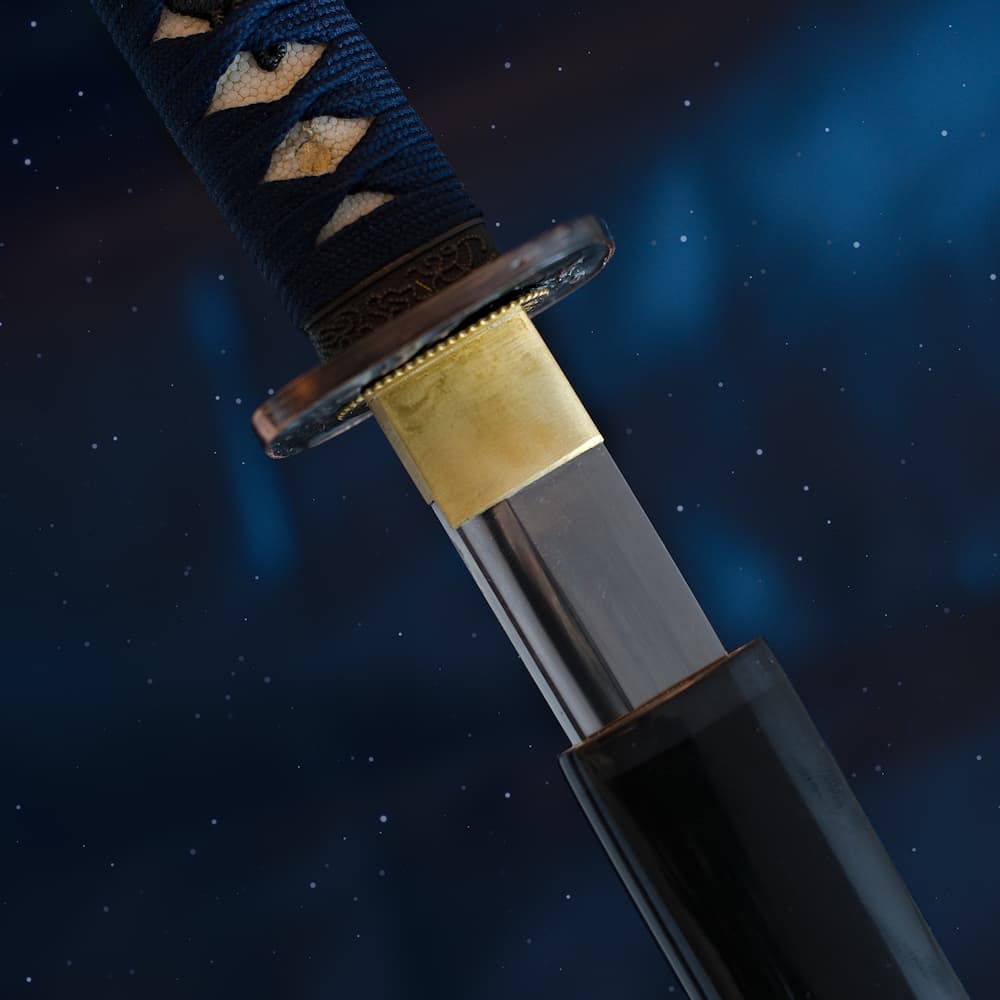



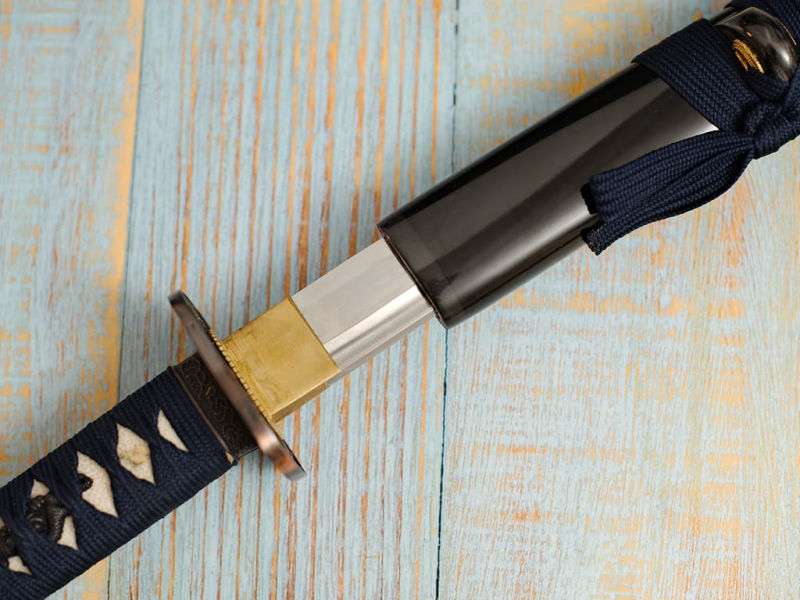
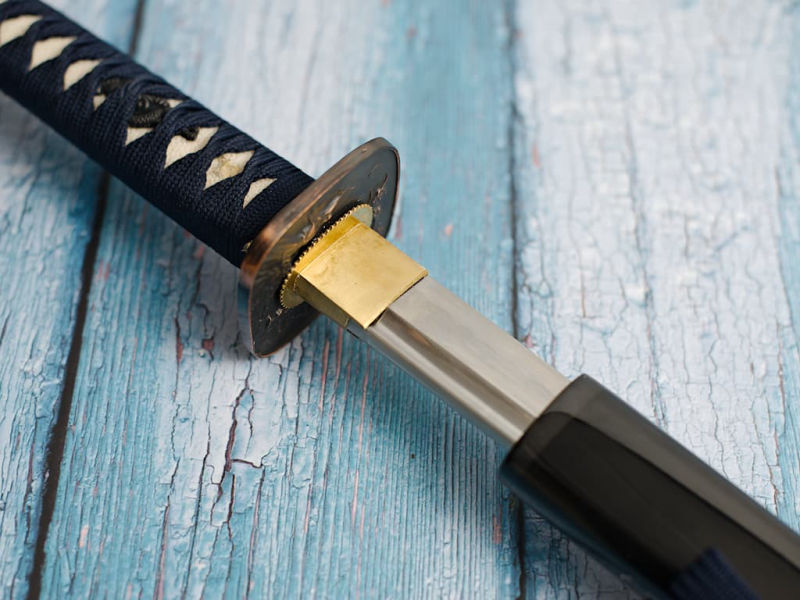
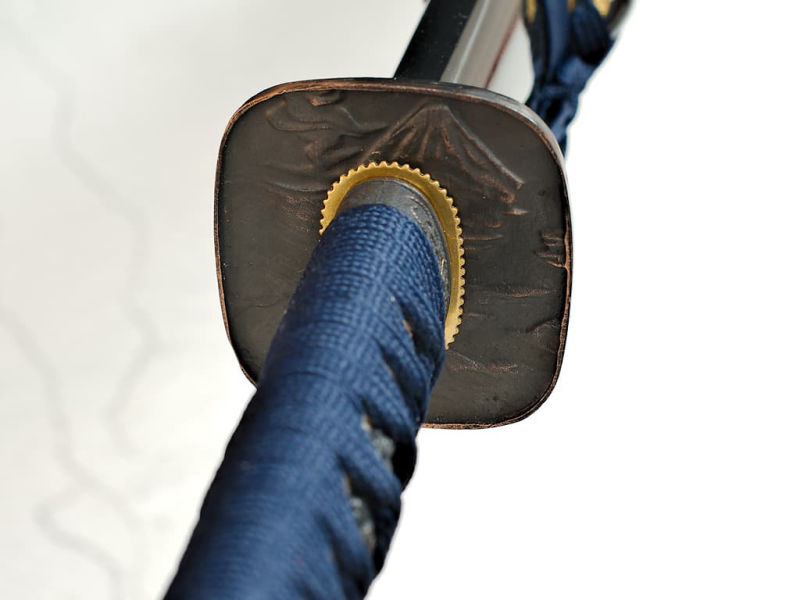
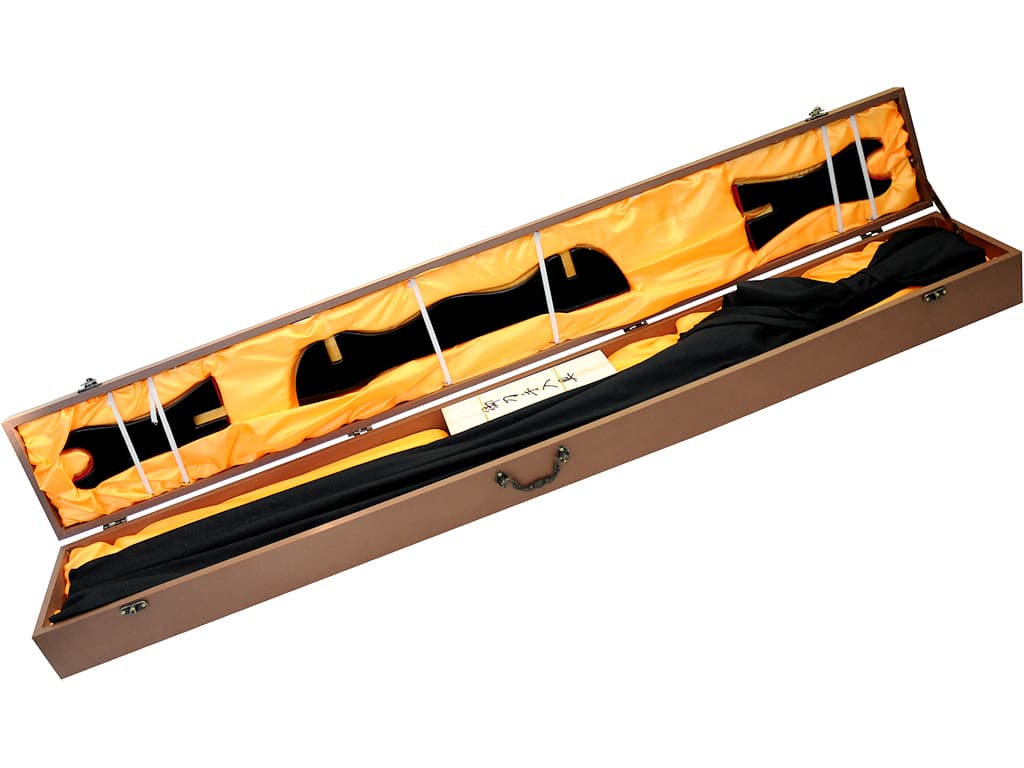
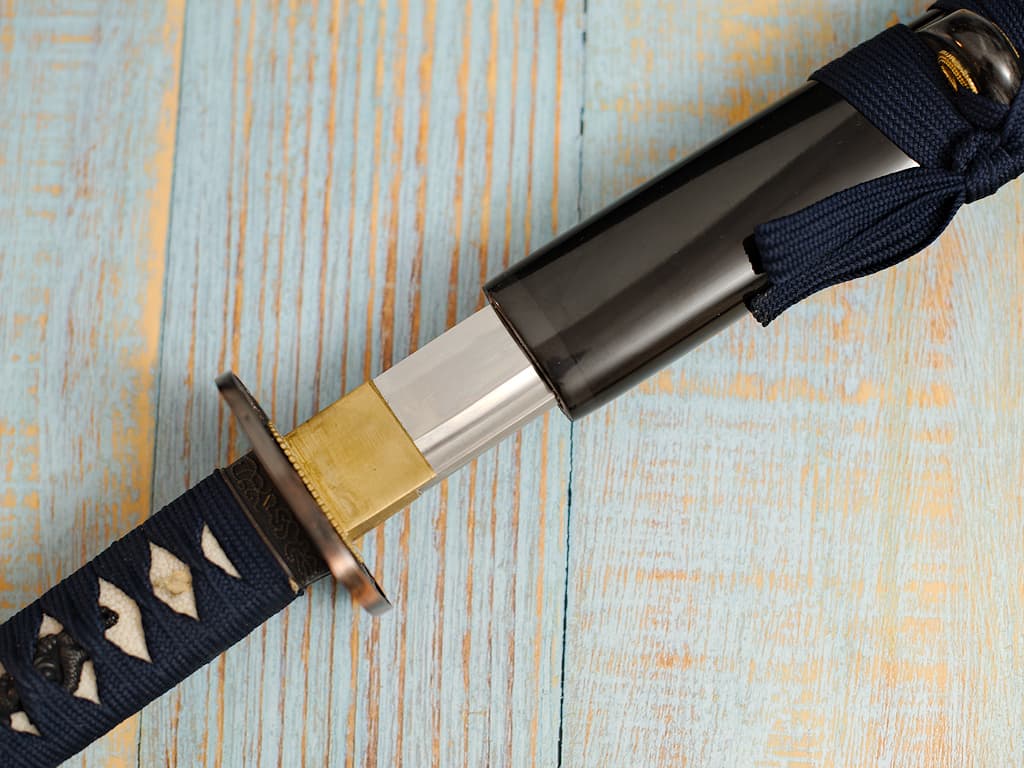
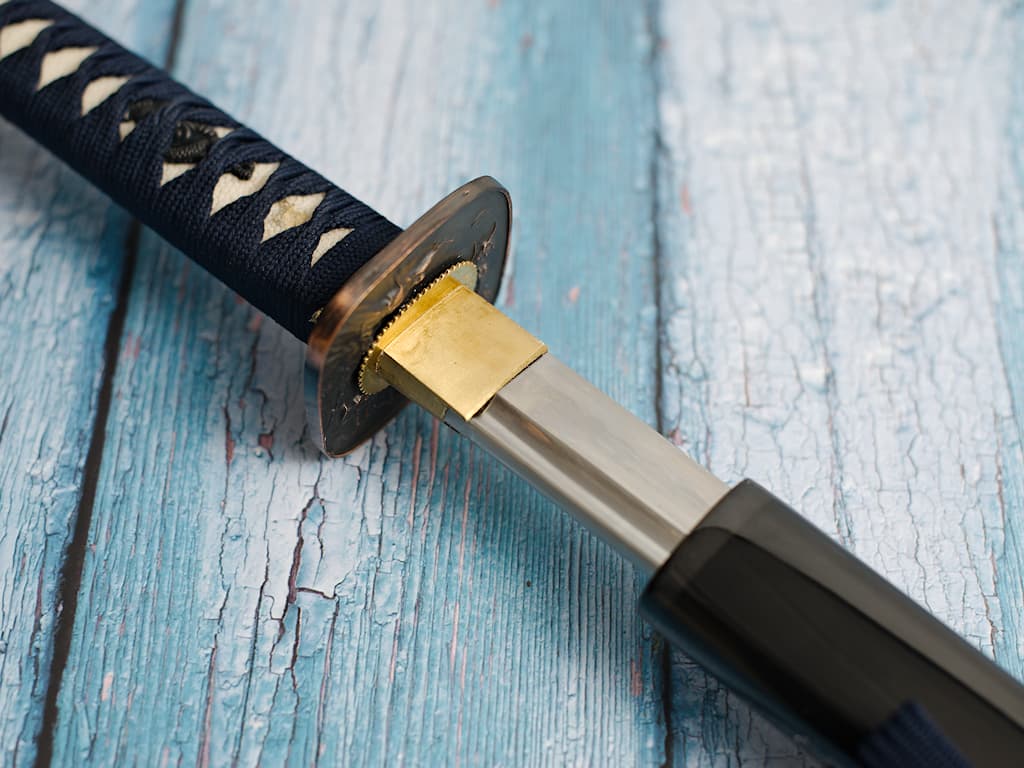
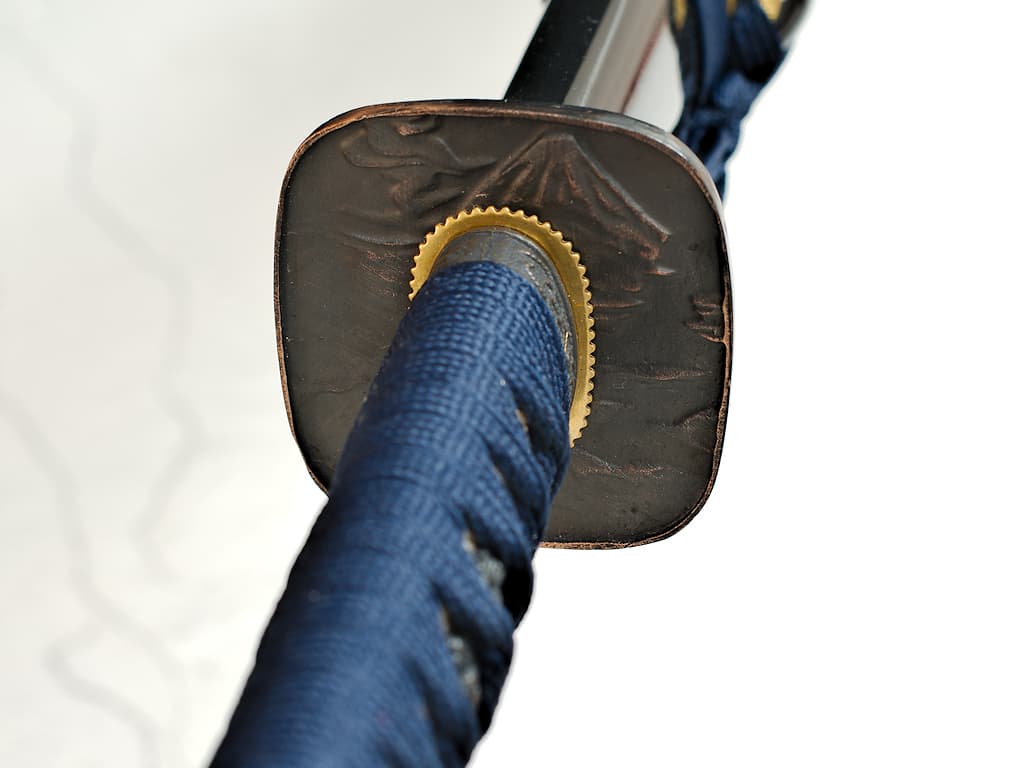
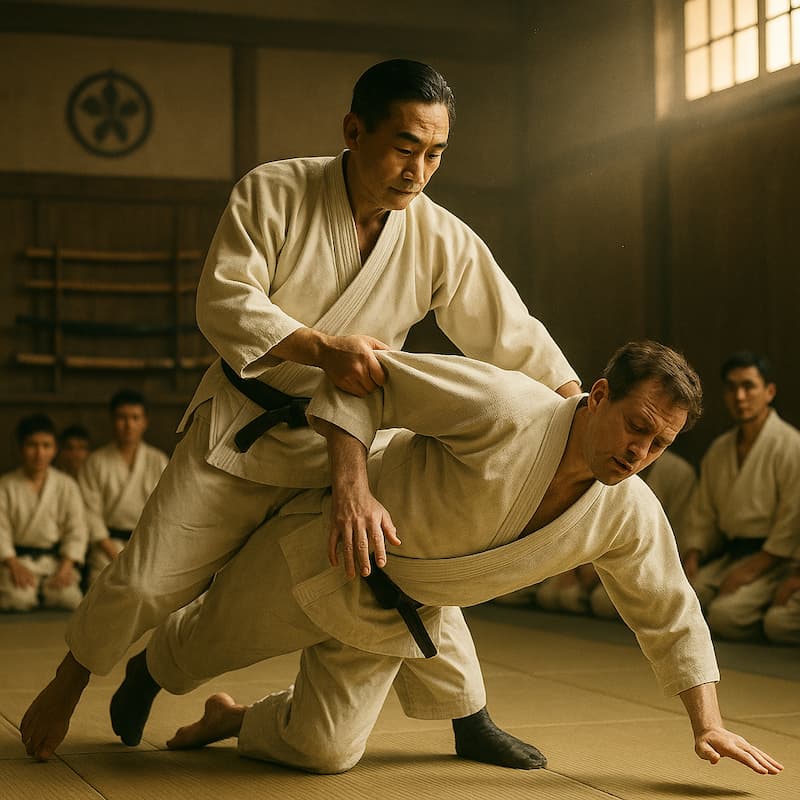
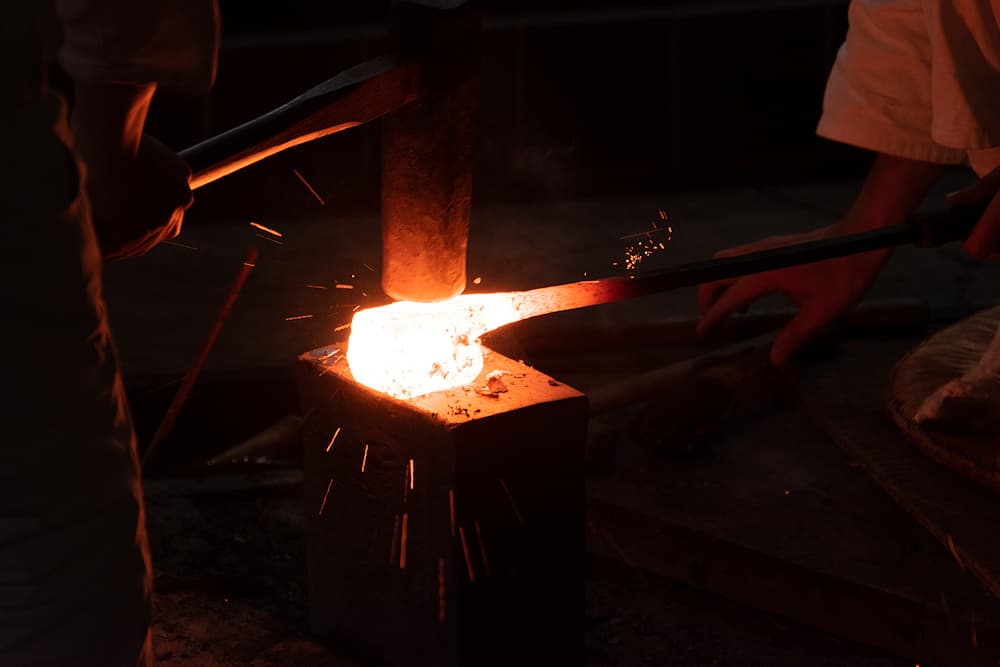
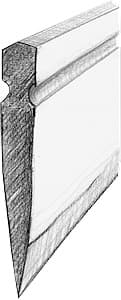 . Mune (棟) : Hikushi
. Mune (棟) : Hikushi